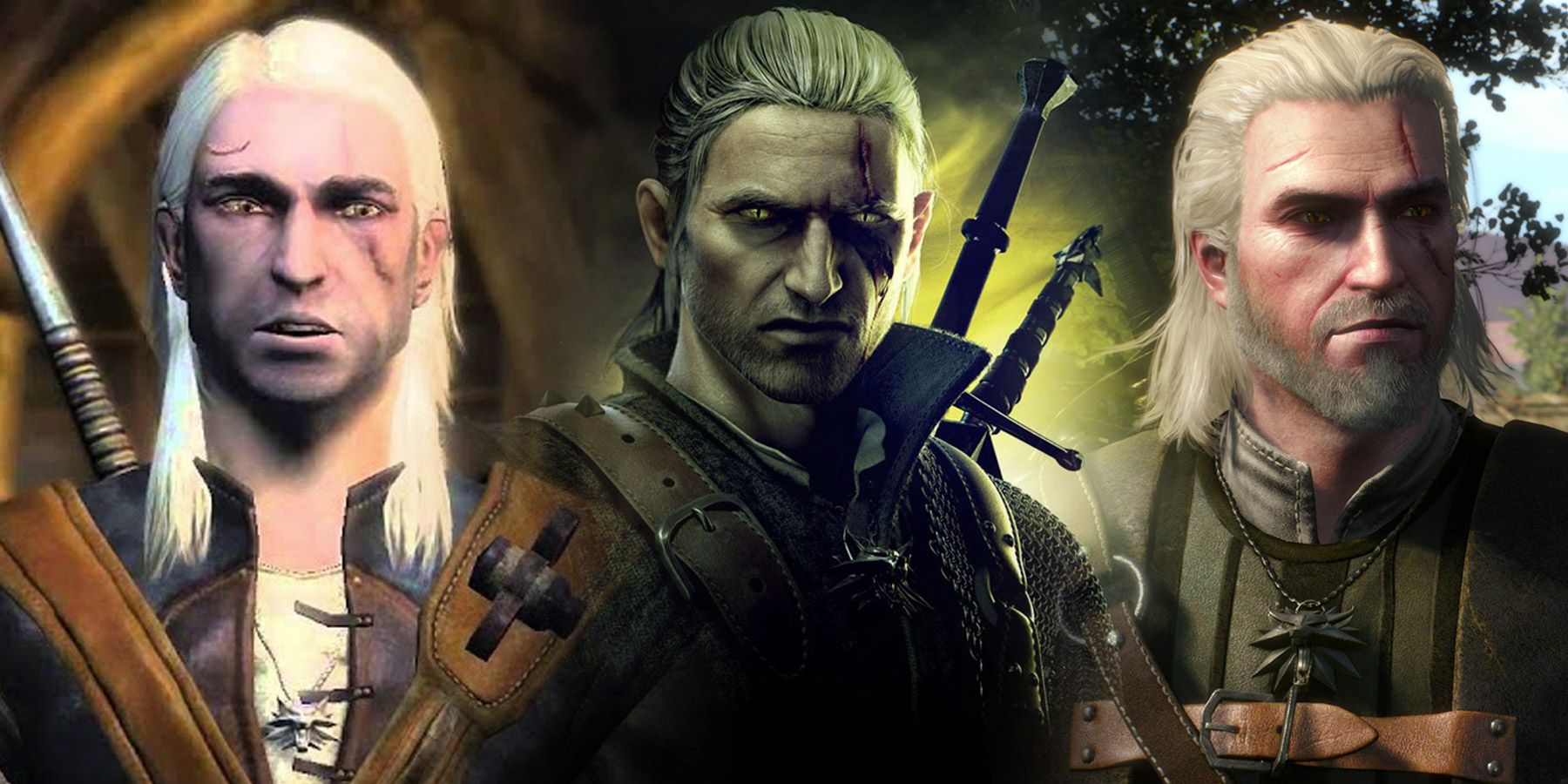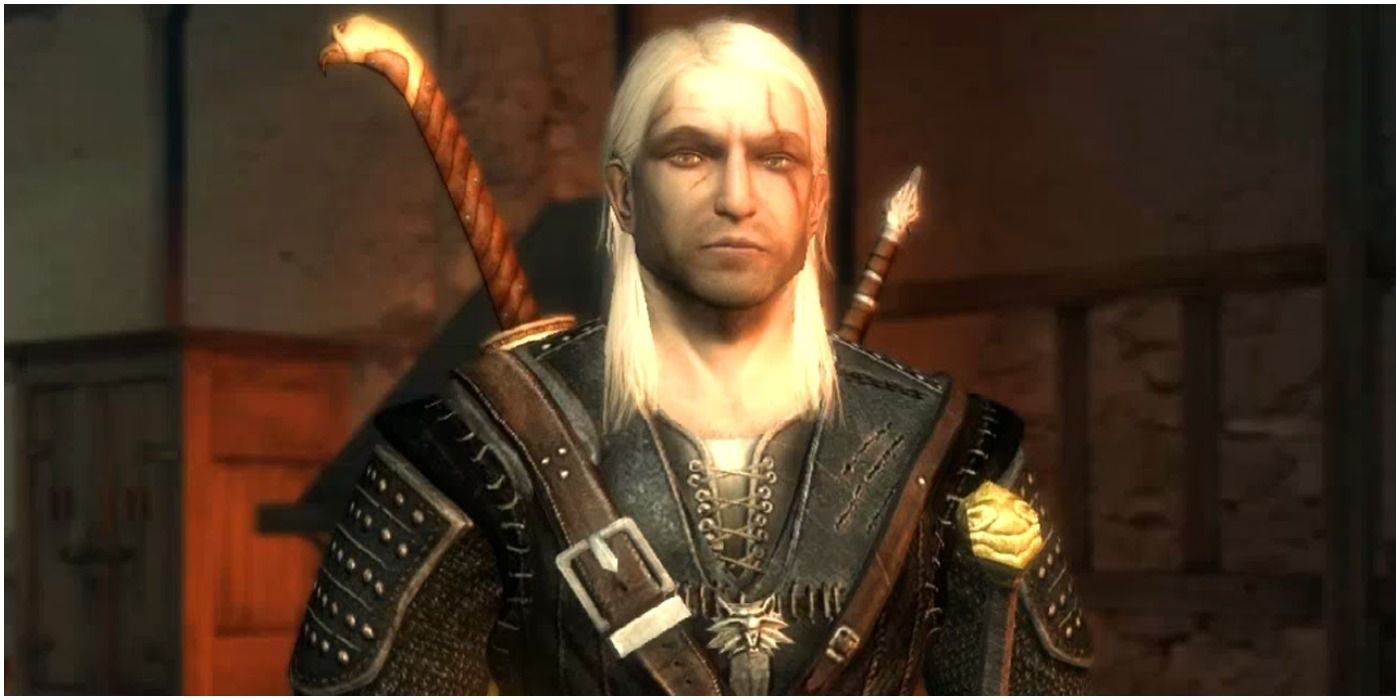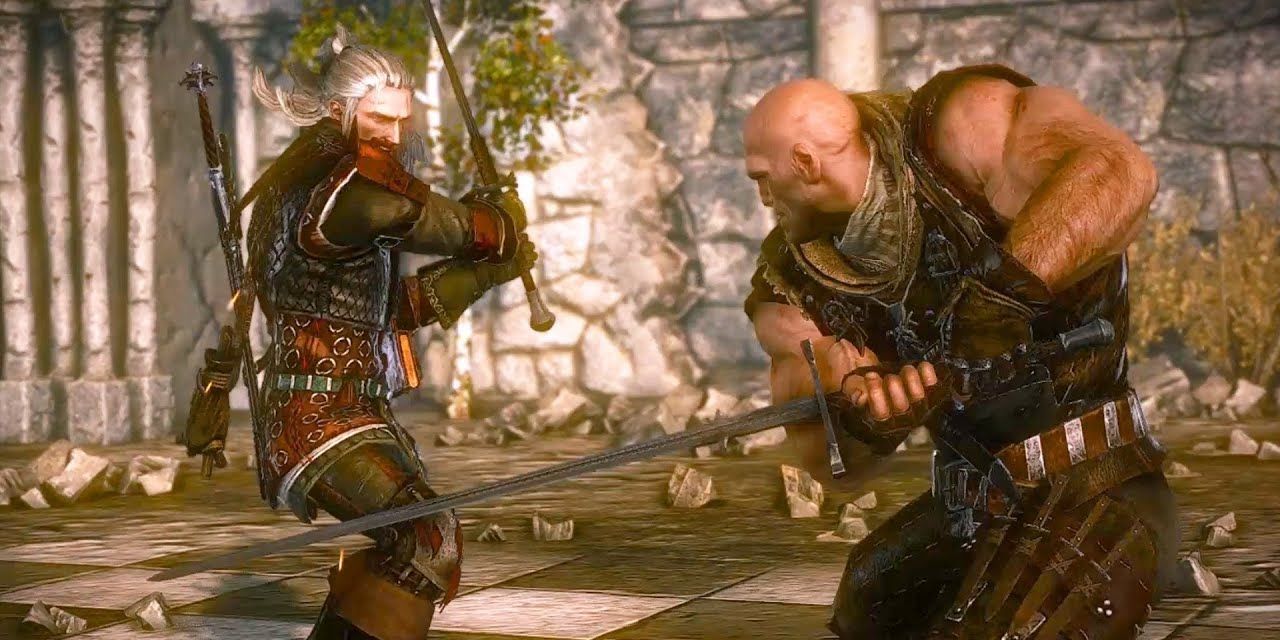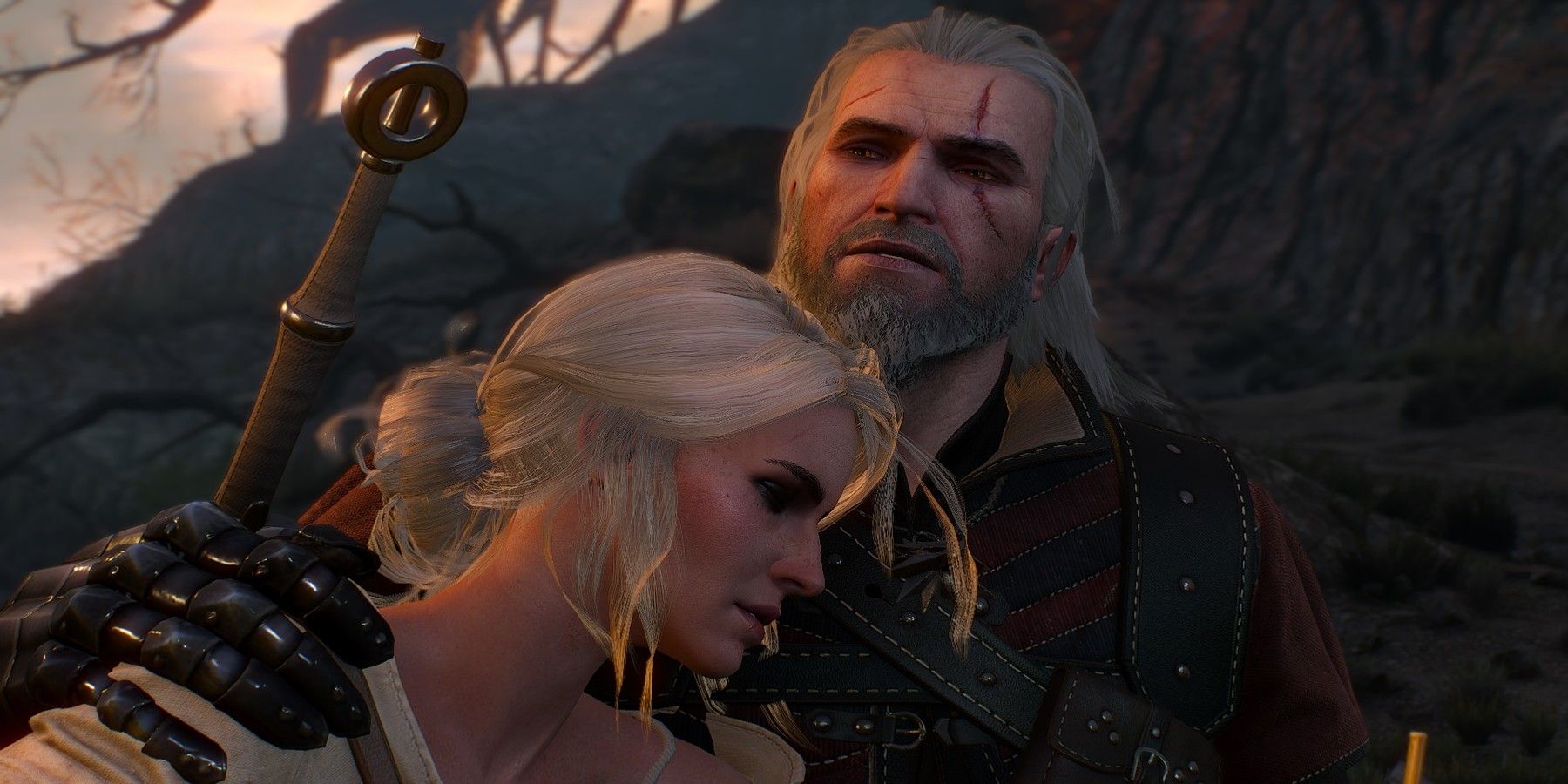CD Projekt Red’s The Witcher games brought the once relatively obscure franchise into the global mainstream. Although the original stories have now been adapted into a successful Netflix show, the game’s Geralt remains the most iconic version of the character for many fans.
While more recent games like Sony’s Spider-Man have sequels reusing assets from the original to some extent, each of the three games in The Witcher franchise made ambitious, fundamental changes that make each game very different. Here’s how The Witcher series evolved into one of gaming’s most beloved RPG trilogies.
Graphics In The Witcher
For any fan of the franchise, returning to the first Witcher game can come as a bit of a shock. While the game’s re-release enhanced its graphics to a degree, the first game has aged far more poorly than either of its sequels. It isn’t just the graphics themselves – Geralt’s character design, particularly his face, looks significantly different both in-game and on the box art. The Enhanced Edition certainly helps make the 2007 game look better, but it wouldn’t be until The Witcher 2 that the series’ graphics and visual style really found its footing.
The Witcher 2: Assassin of Kings and The Witcher 3: Wild Hunt have more comparable art styles and graphics than the first entry. The design of key characters like Geralt and Triss were nailed down in the second game, and it still looks great for a title released nearly a decade ago. The particle physics, animation, and textures were a huge improvement over the original, and while The Witcher 3: Wild Hunt took these improvements further, the third game ultimately built on the foundations that the second game set up in a way that Assassin of Kings did not build directly on the first game.
When it comes to visual improvements, The Witcher 3: Wild Hunt’s most impressive addition is its open world. The Witcher 2 looked fantastic, but it also limited its explorable areas to smaller, story-relevant segments of the world. While players were occasionally treated to a good-looking vista, they could rarely actually ride out to the horizon and explore those areas. The Witcher 3’s world, on the other hand, is huge, visually diverse, and even manages to recreate the bustle of medieval towns and cities in a way few RPGs have achieved.
Gameplay Mechanics In The Witcher
As with the series’ graphics, The Witcher 2 and The Witcher 3 have far more in common when it comes to mechanics than either has with The Witcher 1. The first game’s combat essentially boils down to a rhythm game where players have to click at the right time in order to hit enemies and build up combos.
As with the sequels, however, the first game includes witcher potions that allows the player to buff Geralt in a variety of ways, from increasing his maximum health to letting him see in the dark. Geralt’s witcher signs, first seen in the books, remain relatively consistent throughout the trilogy, at least when applied to the different combat systems.
The combat in The Witcher 2 lays the foundation for The Witcher 3’s combat. The Witcher 3 made some additions — there was no horseback combat in The Witcher 2, for example. One of the subtle changes that makes a huge difference in The Witcher 3 is that, in the third game, Geralt is far more likely to break out of an initial action in combat to complete the player’s next command, such as a block, whereas the second game usually waited until the animation was complete. Although the combat in both games is almost mechanically identical, this leaves The Witcher 3’s fights feeling far more responsive.
Storytelling In The Witcher
The Witcher 1’s storytelling, unlike its combat and its graphics, can still hold a candle to its sequels. The Witcher 2 and 3 can be slightly confusing for fans without the context from the Witcher books. Even fans who started the series with the second game will likely enter The Wild Hunt wondering who Ciri and Yennefer are. The Witcher 1 begins with Geralt waking up in Kaer Morhen with no memory after his implicit death at the end of the books.
This allowed players to immerse themselves more organically in the character, even if they had no familiarity with the story so far. The story itself has all the hallmarks of the books and the later games — tragic monsters, political intrigue, morally ambiguous allies. Some fans even choose to go back and play The Witcher: Enhanced Edition on easiest difficulty, taking in as much of the story as they can while avoiding the title’s sometimes frustrating gameplay.
The Witcher 2 starts with a bang, with Geralt imprisoned for assassinating King Foltest, flashing back to that fateful day, and beginning his hunt for the true killer. The game’s political factions are brilliantly ambiguous, and major decisions like joining Iorveth or Roche are made in the middle of tense action scenes.
Letho, a fellow witcher, is a great villain, with a plaintive human side that The Wild Hunt lacks to a degree. The true stakes and puppet masters of the story are revealed in a way that makes one of the game’s final options — simply letting Letho go — seem totally reasonable.
The Witcher 3’s story is strong, but also takes place on a far greater scale. Some chapters are stronger than others. The Bloody Baron plotline near the start of the game is one of the best the trilogy has to offer. Geralt’s mission to save Ciri and Yennefer’s involvement can be confusing to fans unfamiliar with the books, but the game’s quests and witcher contracts make its protagonists journey feel at once personal and truly epic.
The future of The Witcher games is unclear. CD Projekt Red has suggested that it may develop a future title without Geralt as the protagonist. One thing’s for certain, any RPG hoping to succeed the original Witcher trilogy has a daunting task before it, and it may be some time before another series finds the same success while making the same huge changes to each game that CDPR risked with The Witcher.
The Witcher 3: Wild Hunt is available now on PC, PS4, Switch, and Xbox One.




